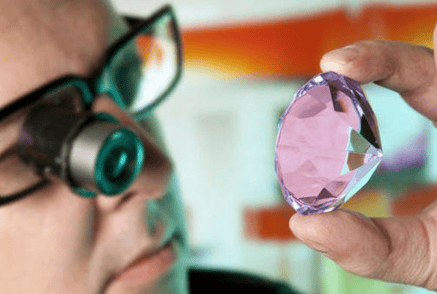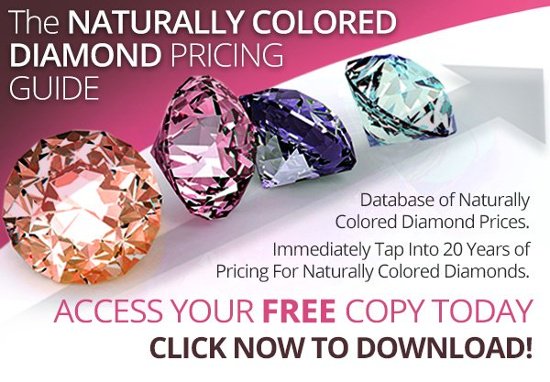They say diamonds are a girl’s best friend. But did you know they’re also an investor’s best friend? The limited supply and rarity of specific colors has caused record-breaking colored diamond sales. Here’s eight colored diamonds facts you should know.

In this article we will learn:
- How colored diamonds are graded
- The types of certifications given by the GIA
- How rarity affects value
- The importance of diversifying your portfolio
- How prices for these stones have been increasing during the past decade
- The time and effort it takes to cut and polish colored diamonds
- How these diamonds are constantly appreciating
- The difference between treated and naturally colored diamonds
1. Diamonds Are Graded Based Off 4 C's
The 4 C’s are essential when exploring a diamond investment and should be properly understood. They stand for: carat, color, clarity, and cut. Here’s what you need to know about them:
- Carat - Higher priced diamonds are typically heavier stones. This is mostly because these larger diamonds are harder to find and come by.
- Color – Of all the colored diamonds, red, pink, and blue are the most rare.
- Clarity – There are numerous types of diamond clarity. Check out a deeper explanation here.
- Cut – This metric is determined by how the diamond is shaped as well as the stone’s ability to exhibit desirable visual effects.
2. Colored Diamonds Are Graded By The GIA
There are mainly two different types of colored diamond certifications provided by the Gemolofical Institute of America (GIA). The first, and most commonly known, is the all inclusive, Colored Diamond Grading Report. The second report is known as Colored Diamond Identification and Origin Report. While these reports may differ vastly in terms of detail and audience, they carry the same authority and validity for the holder of the diamond. Read more about the GIA report here.
3. The Limited Availability Of These Stones Impacts Their Value
The Argyle mine commenced open pit mining operations in December of 1985. While the diamonds initially unearthed were of a lesser value when compared to the global average; the mine had immense volume and the precious stones had a grade whose richness would eventually rewrite geological textbooks. As operations progressed, Argyle ultimately became the fourth largest diamond producer by volume worldwide, and contributes to roughly 90% of naturally colored diamonds even today. Most recently, the mine is scheduled to cease operations by the year 2020. Read more here to see what might happen once the Argyle mine is closed.
4. Diversify Your Portfolio
Experts in any form of investing always recommend diversifying your portfolio. This is also true with colored diamonds. While you might be tempted to spend the entirety of your budget on one diamond, it’s a smarter move to split the spending between two or three diamonds. For an example, assuming you have $50,000 to spend, consider investing in a $20,000 pink diamond, $20,000 blue diamond, and a $10,000 yellow diamond.
5. Colored Diamonds Have Been Selling For Record Prices
Colored diamonds have been known to bring astounding prices on the auction block. Pink diamonds are regularly selling for well over 7 figures. Yellow diamonds have been showing the strongest growth potential. Most recently, the CTF Pink Star sold for over $71 million. Another astounding sale was of the sale of a pair of blue and pink diamond earrings, selling for over $55 million
6. Colored Diamonds Take Significantly Longer To Cut Than Colorless
Colored diamonds are thought to gain their hue in part because of the imperfections within the stone that refract light differently than colorless stones. Thus, a completely different method is used by the diamond cutters and diamond cutters that regularly cut colorless stones would not be given the task of working on a colored stone.
7. Colored Diamonds On Average Increase 10-15% Per Year
A report by the Israeli Diamond Company from 2014 indicates that colored diamonds have grown by an average of 167% since 2005. Auction prices for pink diamonds have seen an average value per carat climb to over $2 million
8. There’s A Difference Between Natural & Treated Diamonds.
Don’t be fooled; the treated diamonds have their color added artificially, are mass-produced, and are considered replicas, thus lowering the value of the original diamond. The presence of these treatments will significantly decrease the value of the stone and it would no longer be classified as a "Natural Color Diamond."
If you enjoyed this article check out some other great reads from the list below. And as always feel free to follow us on Facebook and Twitter.
For more reading on colored diamonds, check out the link below:


